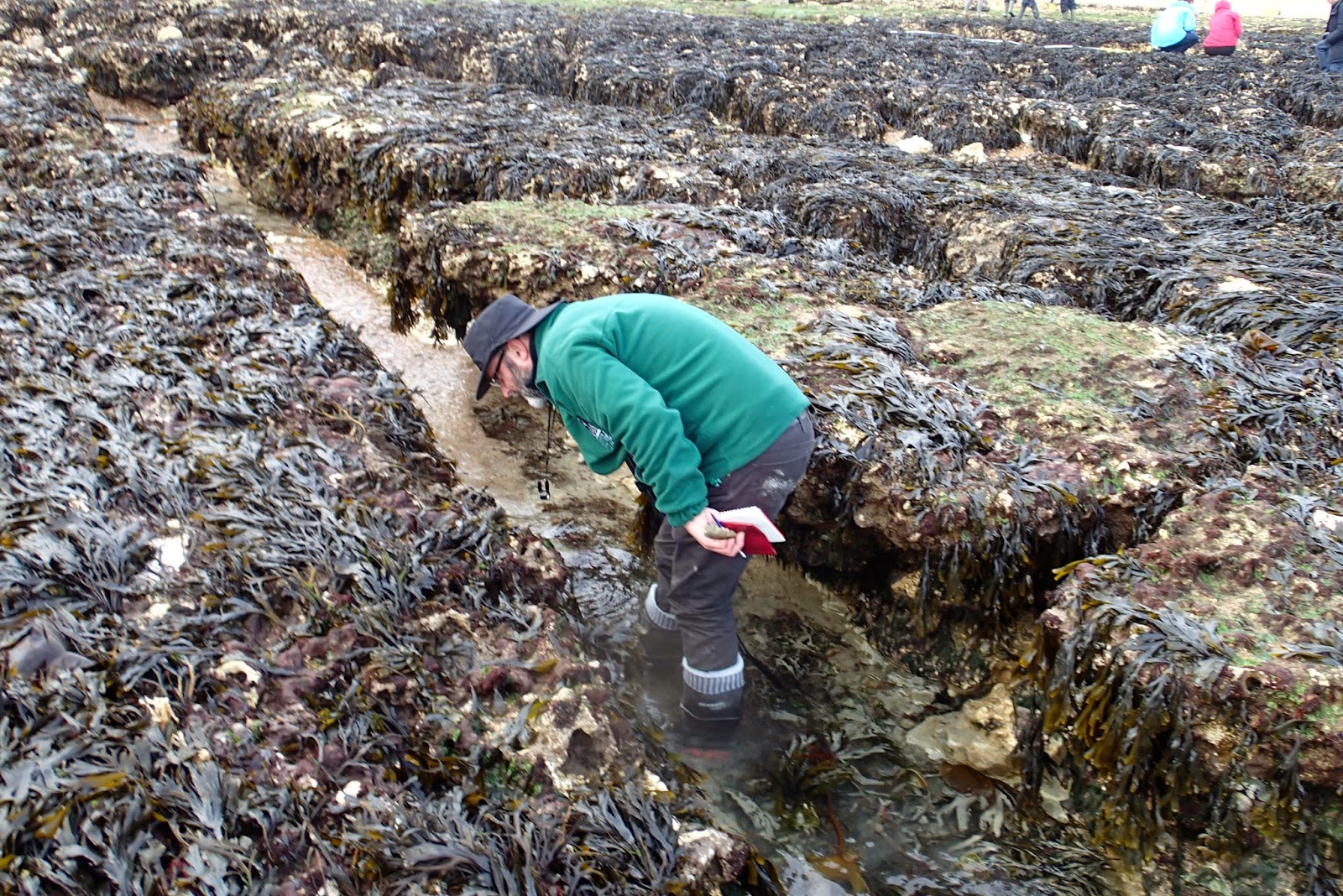 Last week three Cornwall Wildlife Trust Marine team staff attended a PANACHE conference held at St Margarets Bay near Dover. It was a good conference and a chance to further develop our links with our french counterparts! Lots of exciting events, surveys and dives are being planned on both sides of the channel for 2014.
Last week three Cornwall Wildlife Trust Marine team staff attended a PANACHE conference held at St Margarets Bay near Dover. It was a good conference and a chance to further develop our links with our french counterparts! Lots of exciting events, surveys and dives are being planned on both sides of the channel for 2014.On day 2 we all went down to the shore to see what the intertidal looks like below the white cliffs of Dover. The chalk bed rock is soft and thus mussels and barnacles are not all that common - they just get washed off.
Limpets make impressive trails as they graze the rocks for algae with their iron reinforced radulae they remove a layer of chalk. You can see the freshest trails are the whitest, older trails get gradually more re algaed up!
 |
| Brilliant limpet trails |
Beautiful gullies were formed as freshwater has dissolved the chalk. Patrick from Fish Watch forum was a bit unimpressed with the sparseness of fish life in the pools, the water is still very cold in the channel at the moment but he was pleased when we found a BAP species - a juvenile eel (Anguilla anguilla).
 |
| Tim Ferrero of Hampshire and Isle of White Wildlife trust explores a gully |
 |
| Flat topshells are a climate change indicator species and have only recently reached this stretch of coast |

No comments:
Post a Comment